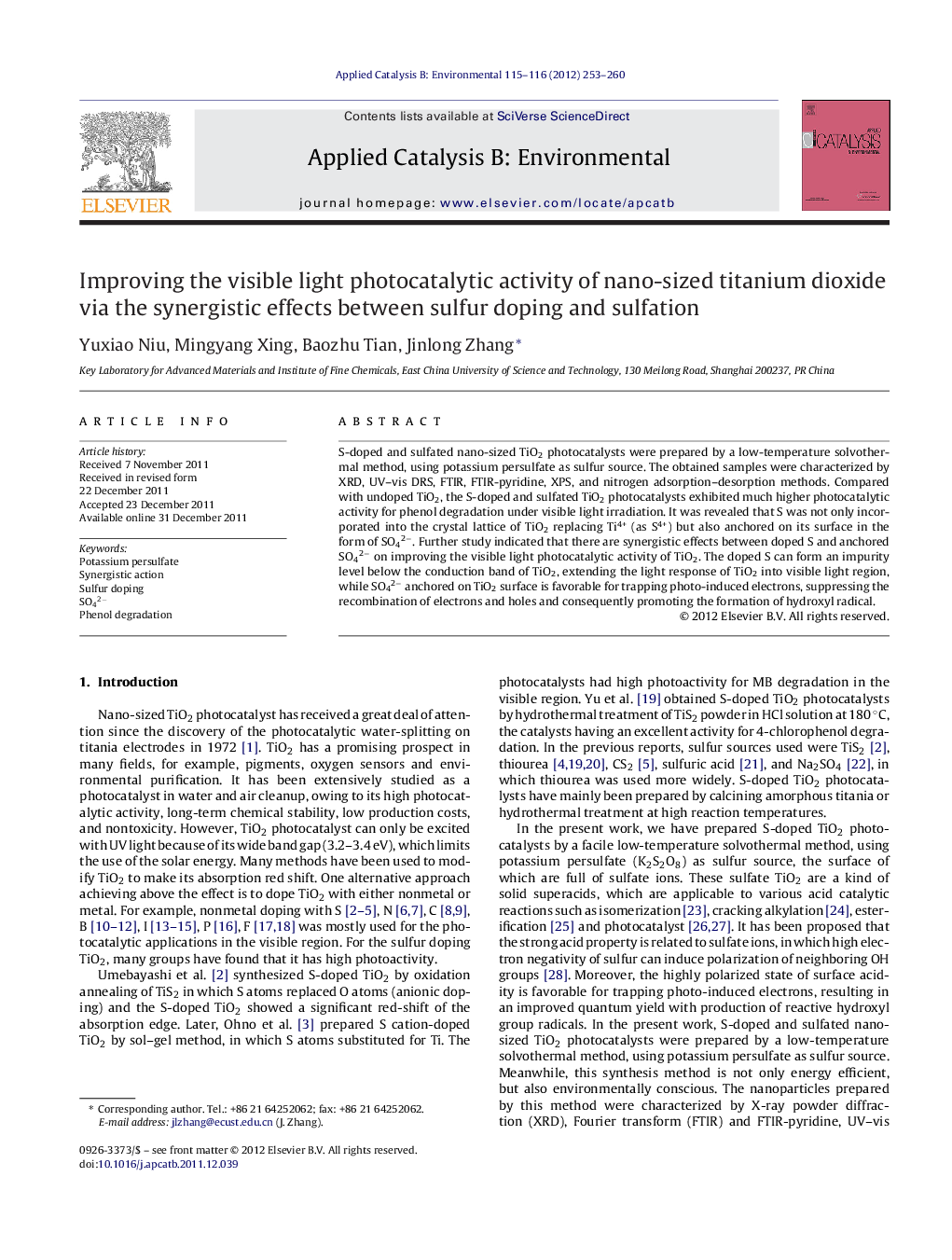| کد مقاله | کد نشریه | سال انتشار | مقاله انگلیسی | نسخه تمام متن |
|---|---|---|---|---|
| 46427 | 46439 | 2012 | 8 صفحه PDF | دانلود رایگان |

S-doped and sulfated nano-sized TiO2 photocatalysts were prepared by a low-temperature solvothermal method, using potassium persulfate as sulfur source. The obtained samples were characterized by XRD, UV–vis DRS, FTIR, FTIR-pyridine, XPS, and nitrogen adsorption–desorption methods. Compared with undoped TiO2, the S-doped and sulfated TiO2 photocatalysts exhibited much higher photocatalytic activity for phenol degradation under visible light irradiation. It was revealed that S was not only incorporated into the crystal lattice of TiO2 replacing Ti4+ (as S4+) but also anchored on its surface in the form of SO42−. Further study indicated that there are synergistic effects between doped S and anchored SO42− on improving the visible light photocatalytic activity of TiO2. The doped S can form an impurity level below the conduction band of TiO2, extending the light response of TiO2 into visible light region, while SO42− anchored on TiO2 surface is favorable for trapping photo-induced electrons, suppressing the recombination of electrons and holes and consequently promoting the formation of hydroxyl radical.
.Figure optionsDownload as PowerPoint slideHighlights
► S doped and sulfated TiO2 photocatalysts were prepared by a low-temperature solvothermal method, with potassium persulfate as sulfur source.
► The S doped and sulfated TiO2 photocatalysts have high photocatalytic activity to phenol degradation.
► Sulfur can not only be doped into TiO2 lattice but also anchored on the surface.
► The high photocatalytic activity of phenol was caused by the synergistic effect between S doping and sulfation.
Journal: Applied Catalysis B: Environmental - Volumes 115–116, 5 April 2012, Pages 253–260